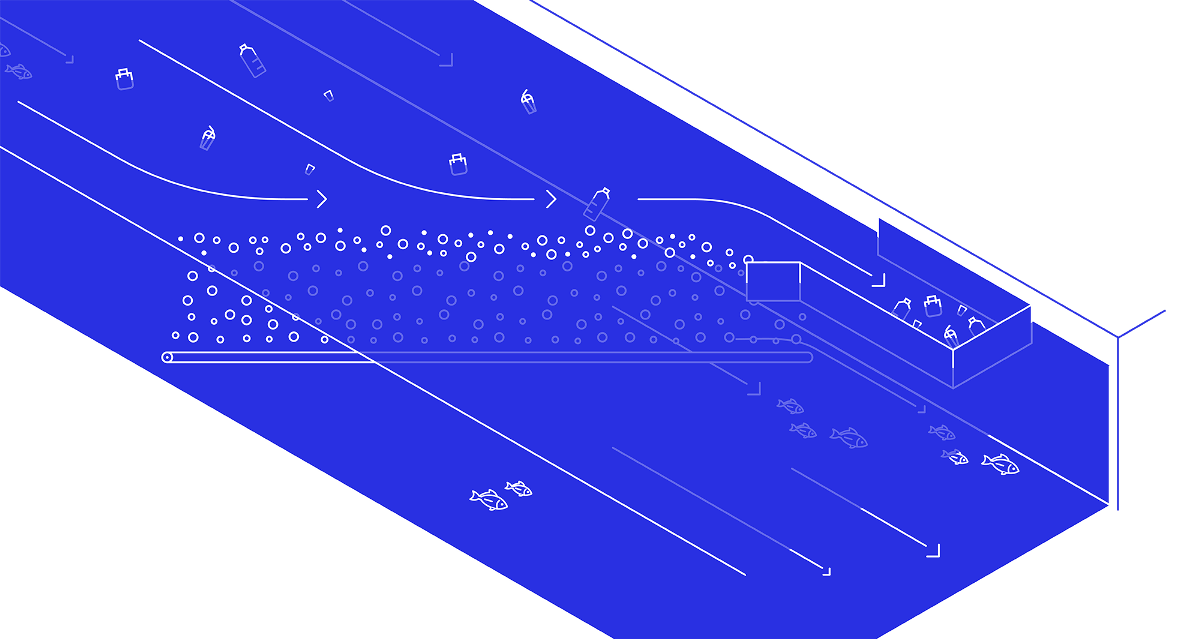The world's first bubble barrier made entirely of bubbles was made known in Amsterdam in an attempt to collect waste in the city canals before reaching the North Sea.
A Dutch startup, the municipality of Amsterdam and the Regional Water Board launched the Great Bubble Barrier, a simple device that channels garbage, especially small pieces of plastic, next to the Westerdok canal where it can be recovered. Tests have shown that it can divert more than 80% of floating debris.
“More than two thirds of plastics in the ocean leave rivers and canals, so if you have to intercept it, why not do it in rivers?†Says Philip Ehrhorn, co-inventor of technology. "You can't put a physical barrier in a canal: it must be open for wildlife and recreation."
The hope is that innovation will help address the growing crisis of plastic waste in the ocean. Estimates suggest that up to 8 million tons of plastic end up in the seas of the world each year, the equivalent of a truck loaded with old bottles, trays and containers per minute.
The bubble barrier is a long, perforated tube that extends diagonally for 60 meters through the bottom of the channel. Compressed air is pumped through the tube and rises to the surface, and then the natural water stream helps push the debris to the side.
Ehrhorn, a German naval architect and ocean engineer, was inspired by a water treatment plant he saw while studying in Australia in 2015. “On one stage they aerate the water and on a large surface they put air bubbles like a large jacuzzi,†said.
“The small pieces of plastic that people throw into the bathroom were gathered in a corner and that was the trigger for the idea for me. If you can guide the plastic to one side, can't you do it in a more directed and purposeful way in a river? â€
At the same time, three enthusiastic Dutch amateur sailors and friends, Anne Marieke Eveleens, Francis Zoet and Saskia Studer, were discussing the problem with a beer in Amsterdam one night and came up with the idea of a bubble curtain that separates the debris.
The two teams joined together to work on the idea, with the help of a € 500,000 prize from Postcode Lotteries Green Challenge and other prizes.
The first operational barrier in Amsterdam, which will run 24 hours a day for three years, aims to complement dredging operations, which currently collect 42,000 kg of larger plastics from the waterways of the Dutch capital every year. Bubble barrier debris will be collected separately, then analyzed by the Schone Rivieren (clean rivers) plastics action group.
Marieke van Doorninck, director of sustainability of the Amsterdam council, hopes it will be a successful example. "The canals of Amsterdam have enormous appeal," he said. “But when you think of them, you don't think of plastic bottles and bags in the water. The bubble barrier will mean that fewer plastics reach the ocean, and it is a step towards better regulation of our ecosystem, for the benefit of man, other animals and the environment. â€
“This special relationship with water combined with an entrepreneurial mindset means that innovation is our core. The bubble barrier is a solution for clean water for everyone. â€

